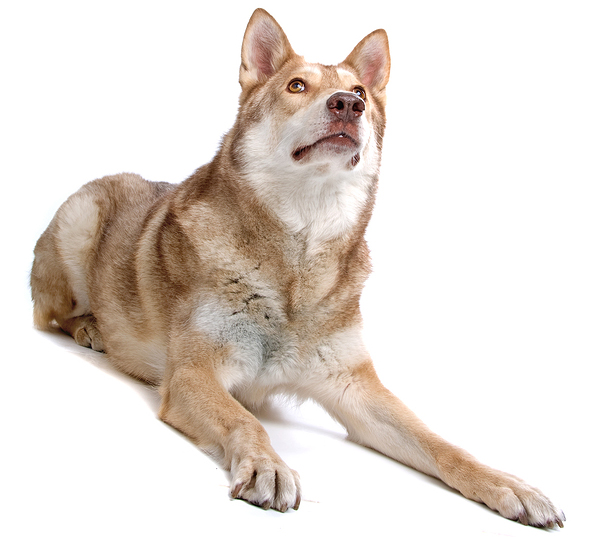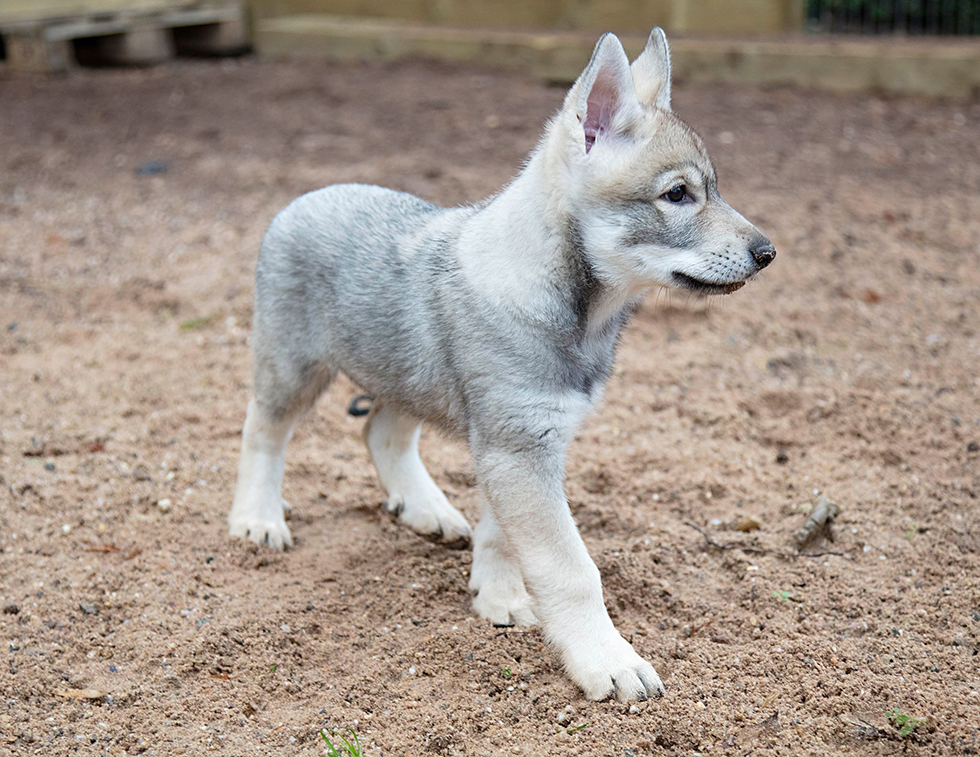Saarloos wolfdog

Overview
Saarloos Wolfdog originates from Holland, from the beginning of the 20th century. A man named Leendert Saarloos decided to cross a German Shepherd male with a she-wolf. He was hoping to create a hard working and disease resilient breed. The dog-wolf couple got 28 puppies through their life but only 3 of them were appropriate to continue the breed. These dogs can be good as guide dogs for blind people or as rescue dogs.
Temperament and nature of the dog, training requirements
Saarloos Wolfdog is a reliable and intelligent dog. These dogs have very sharp senses and react quickly, that's why they are highly appropriate for situations that require those qualities, (leading blind people etc.).
They cannot live in small, enclosed areas, such as cages or small apartments. The enclosure for the dog can be outside, but make sure it's big enough, otherwise, the dog can even experience panic attacks. Don't let the dog roam free, as they like to run away and explore their surroundings and they might get hurt or lost in the process. They need a lot of activity and walks, therefore they are not appropriate for people who are at work all day.
The Saarloos Wolfdog is not hyperactive and conserves energy for situations when it's most needed, but that doesn't mean they don't have a lot of energy. They move similar to wolfs. They like to observe and control their territory but usually don't get aggressive with other dogs.
This breed is not appropriate for beginners or inexperienced dog owners. It's important to have a lot of knowledge about wolf-like behaviour and the breed. They need to be trained as puppies, to achieve the best results. Training them requires a lot of patience and you should never try to train them with force. They are very loyal to their master but might be reserved around strangers. They need to be supervised with children and other dogs.
Lifespan and general health
The lifespan of the S. Wolfdog is somewhat longer and can be from 12-15 years. Some other research suggests from 9-12 years, but generally similar than other large dogs, so it can go up to 15, in perfect conditions. They don't have any particular medical problems and are generally a very healthy breed.
Shedding, size and appearance
These dogs can have up to 100 pounds, which makes them a large breed. They need a lot of grooming, as they shed a lot. Most of the time, they look a lot like wolves and are diverse in "wolf fur" colours, as in shades of grey, brown and white.
Breed Information
| Popularity: | # |
| Origin: | Germany Netherlands |
| Breed Group: | Herding |
| Size: | Large |
| Type: | Cross Breed |
| Life span: | 10-12 years |
| Temperament: | Devoted Energetic Independent Lively Proud Reliable |
| Height: | 24-29.5 inches (60-75 cm) |
| Weight: | 79-90 pounds (36-41 kg) |
| Colors: | Black Black and Tan Blue Silver White |
| Litter Size: | 4-6 puppies |
| Puppy Price: | Average $800 - $1000 USD |
Breed Characteristics
| Adaptability: |
|
| Apartment Friendly: |
|
| Cat Friendly: |
|
| Child Friendly: |
|
| Grooming: |
|
| Health Issues: |
|
| Intelligence: |
|
| Trainability: |
|
| Watchdog Ability: |
|
Dog names
| Rank | Male | Female |
|---|---|---|
| 1 | Jack | Lola |
| 2 | Bentley | Roxy |
| 3 | Lucky | Lilly |
| 4 | Sam | Annie |
| 5 | Gizmo | Lexi |
| 6 | Roscoe | Izzy |
| 7 | Rocco | Cookie |
| 8 | Blue | Missie |
| 9 | Oreo | Macy |
| 10 | Chico | Hannah |
| 11 | Chase | Bonnie |
| 12 | Cash | Delilah |
| 13 | Mac | Ava |
| 14 | Scooter | Oreo |
| 15 | Chewy | Nikki |














